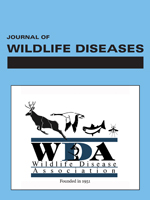We compared the efficiency of succinylcholine chloride, xylazine hydrochloride and carfentanil/xylazine mixtures in immobilizing 364 free-ranging moose (Alces alces) between 1987 and 1997 in Que′ bec (Canada). With succinylcholine chloride (0.070, 0.062, 0.051 mg/kg of estimated body weight for calves, juveniles and adults), 63% of the 252 immobilization attempts led to complete immobilization and marking, whereas 7% of the darted animals died of respiratory paralysis during handling. The moose took an average of 13 min to lay down after darting (down time). Injection of xylazine (3.67–4.22 mg/kg) permitted sedation (the animal laid down but got up again when approached) or complete immobilization in 78% of the 40 darted adult moose, the mean down time being 8.7 min. No mortality was noted with this drug but 58% of the marked animals were only sedated. The use of RX821002A (0.058 mg/kg) as an antagonist, permitted a mean recovery time of 2.8 min after intravenous injection. With the carfentanil/xylazine mixtures (0.0071 and 0.181 mg/kg), 96% of the immobilization trials (n = 72) led to complete (88%) or partial (8%) immobilization, but 6% of the moose died several days after capture. The mean down time was 6.6 min, and injection of naltrexone (0.709 mg/kg) antagonized the effect of the immobilizing agent within 3.7 min. The respiratory rate was higher (P < 0.05) among moose immobilized with xylazine (35/min) than among those immobilized with carfentanil/xylazine mixtures (19/min) but this variation could be related to a longer pursuit time (z = 3.60; P < 0.01) and higher stress levels during handling. Rectal temperature also was higher with xylazine but the difference was small (39.7 vs. 39.3, P = 0.03) and did not differ significantly between the sexes (P > 0.05). Considering loss of materials and helicopter flight time due to non-successful marking trials, carfentanil/xylazine mixtures were the least expensive ($333 Cdn/animal).
How to translate text using browser tools
1 January 1999
RELATIVE EFFICIENCY OF SUCCINYLCHOLINE, XYLAZINE, AND CARFENTANIL/XYLAZINE MIXTURES TO IMMOBILIZE FREE-RANGING MOOSE
Hugues Delvaux,
Réhaume Courtois,
Laurier Breton,
Robert Patenaude

Journal of Wildlife Diseases
Vol. 35 • No. 1
January 1999
Vol. 35 • No. 1
January 1999
carfentanil
cost
immobilization
moose
naltrexone
physiological reactions
RX821002A




